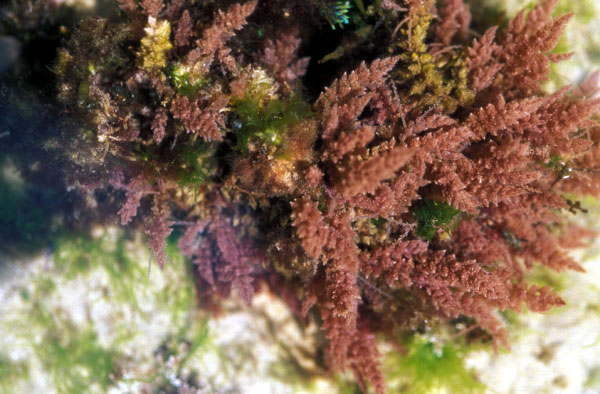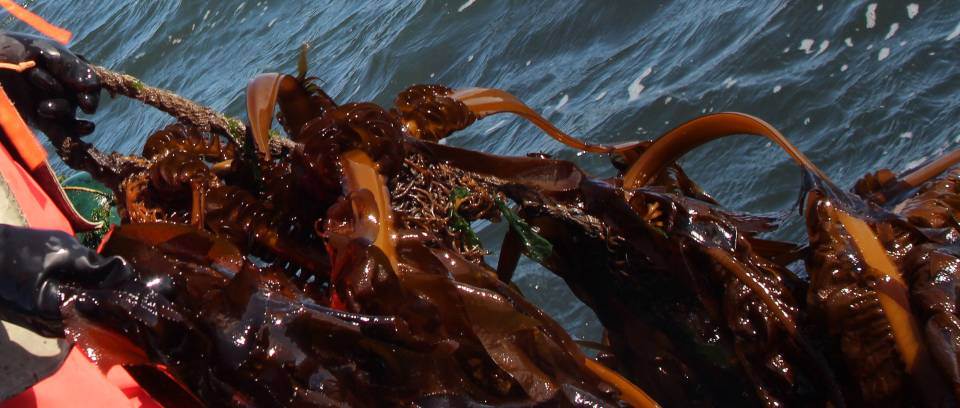a low risk health hazard, periodic monitoring of natural radioactivity in foodstuff remains important in seeking to ensure the radiological safety of the public.
Digital library
-
Although the various benefits of seaweeds are well recognised, potential health hazards are much less well researched, as an instance the possible presence of concentrated levels of natural radionuclides. In present work the concentrations of natural radionuclides in seaweed cultivated in Malaysian seas are assessed using conventional HPGe γ-ray spectrometry. An edible species of seaweed has been collected from several seaweed farms located along coasts of the Andaman and South China Sea. Activity concentrations of 226Ra, 228Ra and 40K in samples collected from Langkawi are observed to be greater than those from Sabah, while 40K radioactivity levels (2.2E3 ± 100 – 3.8E3 ± 180 Bq kg−1) in all samples are noted to be well above the world average value of between 400 and 580 Bq kg−1. The estimated amount of total potassium is in the range 68 – 120 g (kg of seaweed)−1 and 53–106 g kg−1 obtained via ICP-OES, which are in line with data for New Zealand seaweed of between 43.7 and 123 g kg−1. The estimated total effective dose of 84 μSv·y−1 is lower compared to a global internal dose of 290 μSv·y−1 as reported by UNSCEAR. Accordingly, the mean cancer risk from such consumption was also estimated to be slightly lower (1.92 × 10−3) compared to the ICRP cancer risk factor of 2.5 × 10−3 based on the additional annual dose limit of 1 mSv for a member of the general public, which gives an annual mortality probability of 10−5 (1 in 100,000; ICRP, 1991). Although posing
-
Seaweed farming is often depicted as a sustainable form of aquaculture, but suspected habitat alterations and spread of algae outside farms have rendered speculations on the actual degree of sustainability. We conducted an experimental field study on Unguja Island (Zanzibar, Tanzania) to investigate the effects of off-bottom seaweed farming on a tropical seagrass ecosystem, using 1.5 × 2.5 m experimental farm plots. After 11 wk, above-ground seagrass biomass was 40% lower than in control plots, owing to a combination of lower shoot density, shoot length and leaf growth rate. Since the biomass was constant between Day 15 and 75 in the farm (F) treatment, but increased by 67 vs. 48% in the 2 controls (control treatment [C] and stick-and-line control treatment [CSL]), the effect exerted by the farm was a lack of potential biomass increase rather than an actual decrease. The effect was transplanted to associated organisms both in terms of lower seagrass epiphyte cover and changes in the abundance of 2 dominating epifauna taxa (>1 cm): sea urchins and sponges. Furthermore, the F treatment caused an accumulation of seagrass leaf litter, but did not affect sediment organic matter (SOM) content. The mechanisms behind these effects were not explicitly tested, but algal shading, emergence stress and mechanical abrasion were identified as likely contributors. Interestingly, the effects were largely restricted to 1 of the 2 seagrass species present, Enhalus acoroides, while the other, Thalassia hemprichii, remained more or less unaffected. This may be due to reduced interspecific competition or species-specific differences in morphology and stress tolerance, and could in the long-term have implications for (amongst others) associated fish communities. Although seaweed farming at the current level is less detrimental than, for example, intensive shrimp farming, and therefore should be seen as a strong option for future aquaculture developments, intensive farming on seagrasses should be avoided or at least minimized by, for example, implementing other farming methods. The risk of ecosystem-level changes in large-scale and uncontrolled farm enterprises warrants a holistic and integrated coastal management approach which considers all aspects of the tropical seascape including human societies and natural resource use.
-
Kappaphycus alvarezii was cultured in vitro under salinities ranging from 15 to 55 psu for 35 days to determine the differential effect on growth rate, carrageenan yield, and cellular structure. Plants kept in 15 psu died after 3 days, while plants cultured in 55 psu presented low growth rates during the entire experimental period (0.28% day−1 ). Plants cultured in 25, 35, and 45 psu showed growth rates normally associated with this species (between 3% and 4% day−1 ) and similar cellular morphology. Carrageenan yield was significantly higher in plants cultured in 25 psu in relation to the other treatments. As observed by light microscopy, plants cultured in 15 psu showed cellular turgidity and increased cell wall thickness, both consequences of hyposalinity. Chloroplasts and other membranous organelles underwent rupture and considerable disorganization in ultrastructure. Although branches from the 55 psu samples showed plasmolysis, cells were able to maintain chloroplast integrity, despite their rudimentary features. In high salinities, great concentrations of floridean starch grains were observed in subcortical cells, indicating their probable participation in osmoregulation. Based on these results, we defined the range of 25 to 45 psu as the limits of saline tolerance for K. alvarezii. While new field studies are required to confirm these results, it can be concluded that new sites, such as inactive or abandoned shrimp tanks with salinities up to 25 psu, could be considered for commercial farming.
-
Recent concern over marine pollution has developed great attention on likely alteration of ecosystems thereof. Considering that distributional ranges of seaweed species are governed by their success or failure of reproduction, intertidal green alga, Ulva pertusa, was studied to evaluate reproductive responses to environmental pollutants. Percent of sporulation and spore release of U. pertusa grown in the east seawater medium, optimal photon irrdiance west seawater at irradiances higher than 100μmol·m supper(-2)·s supper(-1). In the east seawater medium, optimal photon irradiance for reproduction was found to be at 100μmol·m supper(-2)·s supper(-1) whereas in the west seawater, that was 30μmol·m supper(-2)·s supper(-1). Total quantum requirements for sporulation and spore release were much lower in the east seawater than the west seawater, which suggests that reproduction may be influenced by water turbidity. When U. pertusa was exposed in batch cultures to various concentrations of nitrate and phosphate at 100μmol·m supper(-2)·s supper(-1) of white light, the rate of reproduction was markedly higher in nutrient-added conditions compared with controls with no nutrients. As nitrate concentration increased, the reproductive rate of U. pertusa increased in all cultures of phosphate concentrations indicating that nitrate but not phosphate plays an important role in reproductive process. When copper and lead in combination were added to U. pertusa, percent sporulation and spore release were solely dependent of copper concentration. Sporulation and spore release at 0.01 ppm of copper reached about 80% which was similar to that in control, but no sign of reproduction was found at 0.1 ppm of copper. It can therefore be speculated that reproduction is more sensitive to copper than growth in U. pertusa in view of the previous report that 0.1 ppm of copper was not inhibitive to growth.
-
The red alga Gracilaria lemaneiformis was cultured under different CO2 and phosphorus conditions for 16 days, and its growth, photosynthesis and uptake of nitrate and phosphate were examined in order to establish the longer-term impacts of elevated CO2 and phosphorus supplies on this economically important seaweed. Enrichment with either CO2 or phosphorus in culture markedly increased the growth of G. lemaneiformis compared to the control. Light-saturated photosynthetic rate was enhanced significantly by phosphorus enrichment, but hardly affected by the elevation of CO2 when G. lemaneiformis was grown under low phosphorus conditions. High phosphorus stimulated photosynthetic inorganic carbon utilization and nitrogen uptake. Under low phosphorus conditions, the thalli grown at the high level of CO2 had a lower carbon utilization capacity and a higher nitrogen uptake rate compared to those grown under ambient CO2. Reversed results were found when the algae were grown under high phosphorus conditions. Hence, available phosphorus may regulate inorganic carbon utilization of G. lemaneiformis grown at different CO2 levels, and growth reflected a balance between carbon and nutrient metabolism. Chinese 973 Projects [2009CB421207]; National Natural Science Foundation of China [30970450, 30670396]; Chinese 863 Projects [2006AA10A416]
-
Experiments were conducted in Mayagüez, Puerto Rico, to assess the effects of a commercially available extract of the brown alga Ascophyllum nodosum on ‘Palmer’ and ‘Parvin’ mangos grown for transplants. The extract was soil-applied biweekly at 0 to 5 ml/L, using 150 ml of aqueous solution per plant per application. Both varieties responded similarly to the alga extract. Increasing the extract rate resulted in increased leaf chlorophyll content (up to 25% higher) and accelerated scion shoot height gain (up to 22%). These results indicate that Ascophyllum alga extracts can be used to reduce the time necessary to grow mango transplants.
-
The photosynthetic performance of two species of Meristotheca (Solieriaceae, Rhodophyta), M. coacta and M. papulosa, was investigated under a variety of temperature and light conditions to derive basic information regarding their physiology. A pulse amplitude modulated-chlorophyll fluorometer (Imaging-PAM) was used to generate rapid light curves (RLCs) to provide the relative electron transport rates (rETR) over 21 levels of photosynthetic active radiation (PAR), ranging from 0 to 1,078μmol photons m-2 s-1 at 14 temperatures (i.e., from 8 to 34℃). The initial slope (α), photoinhibition (β) and coefficient (γ) was calculated by fitting the RLCs to a nonlinear model of the form rETR=γ(1-exp(-α・PAR/γ)) (exp(-β・PAR/γ)) using a two-level hierarchical Bayesian model. Both species required temperatures ranging from 18 to 28℃ to maintain optimal photosynthetic activity, as revealed by the estimated model parameters. The optimal PAR (PARopt) increased with increasing temperature. Meristotheca coacta and M. papulosa can be considered well-adapted to the current natural light and temperature conditions of southern Kyushu, Japan. Finding in this study should be useful to the design and manage mariculture programs to conserve the natural resources.
-
Conceptual and numerical models are essential tools in managing and protecting coastal ecosystems. Models may be used in economic, social, and ecosystem simulations for many purposes, including aquaculture design, siting, and operation; ecosystem management and risk assessment; and integration of sustainable mariculture into restoration and management of coastal ecosystems.
-
Gracilaria vermiculophylla is the dominant macrophyte in the Ria de Aveiro lagoon, Portugal (40°38′N, 8°43′W), which is a highly urbanized estuary impacted by oyster cultivation and finfish aquaculture. This study aimed to understand the success of G. vermiculophylla in estuaries by monitoring its abundance and phenology throughout an annual cycle. This species thrives in soft-bottom communities, mostly entangled in the substrate amongst dead bivalve shells and tubes of the polychaete Diopatra neopolitana but it may be also found free-floating; it is present year-round. Carposporophytes were found throughout the year and at all sampling locations. The life history of this taxon was completed in the laboratory. Spore germination and growth success were investigated in a fully factorial designed array of temperatures (5, 10, 15, 20 and 25°C), photoperiods (8, 12 and 16 h day-lengths) and photon flux densities (40 and 100 µmol photons m⁻² s⁻¹). Germination occurred under all conditions, being highest at 20°C under the long day treatment. Germination was lowest at 5°C, with no spore survival. The growth rates of the sporelings were affected by the interaction of the three factors tested. These were minimal at 10°C (2.21% ± 1.14 in 8-h days for tetrasporophytes and 2.60% ± 0.57 in 12-h days for gametophytes) and maximal at 20°C and long day treatments for both gametophyte and tetrasporophyte phases (9.96% ± 0.62 and 16.86% ± 0.73, respectively). No differences were found in the growth rates of the mature haploid or diploid phases. Gracilaria vermiculophylla is reproductive throughout the year. It attains high rates of germination and growth success under a wide range of environmental conditions. With such broad tolerances to environmental factors, G. vermiculophylla has a high invasive potential, which helps to explain its current dominance in the Ria de Aveiro lagoon.
-
The North Sea Farm Foundation pioneers seaweed cultivation in the North Sea. This project addresses the economic prospects of up-scaled production of seaweed, looking at production costs only. Scenarios for future large-scale seaweed production are formulated and evaluated using the EnAlgae economic model. Additionally, Monte Carlo analysis is performed. Based on the findings, we conclude that a significant cost reduction seems possible, with expected cost prices down to €1,200 per ton DM. If all goes well, relatively low-value markets such as the alginate market are within reach. More realistically, a mix of low- and medium-value markets is needed to cover the costs of seaweed production in the North Sea. Current developments show that these markets exist; especially in the food market where seaweeds can be promoted as organic, sustainable and fair trade.





